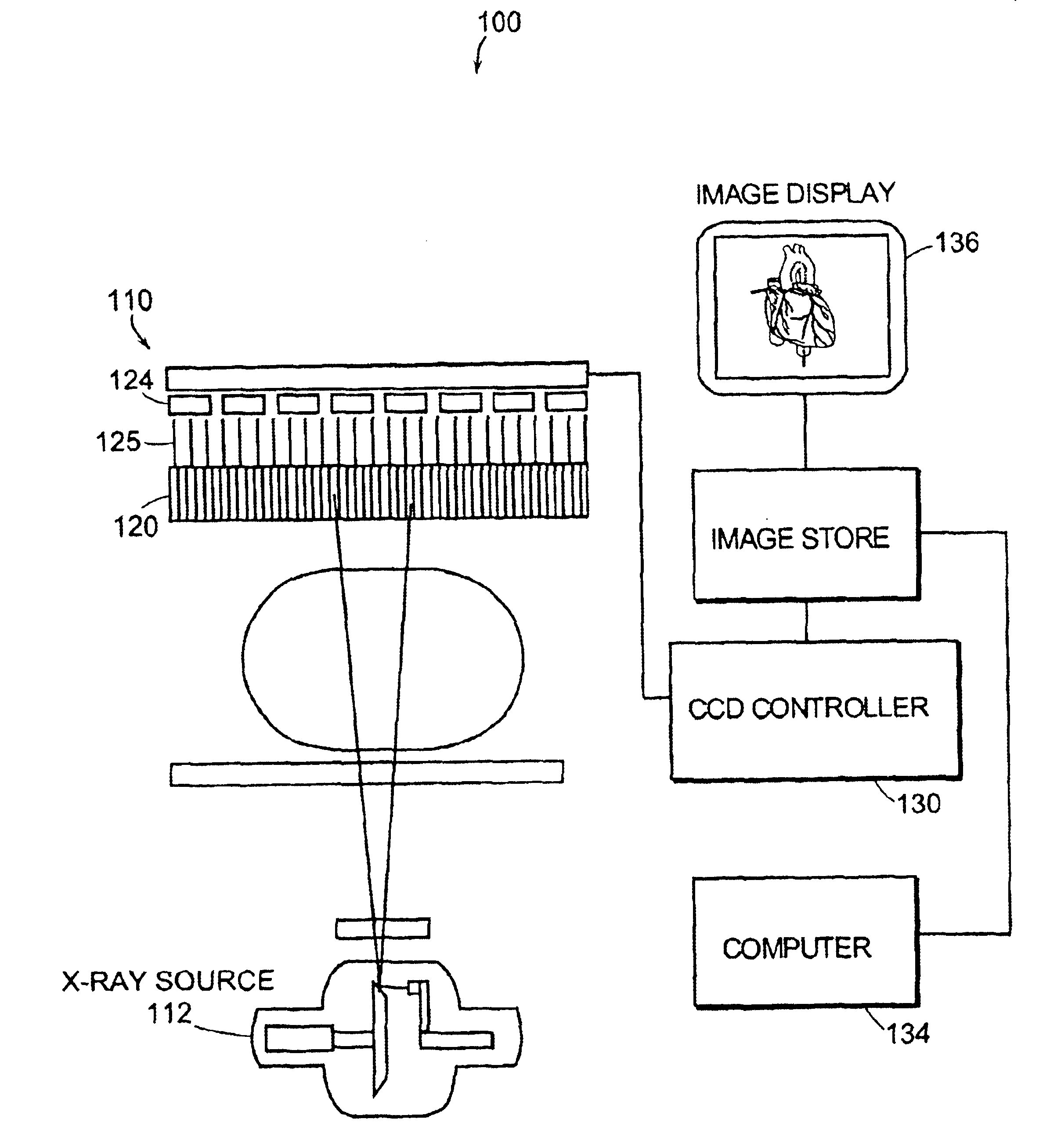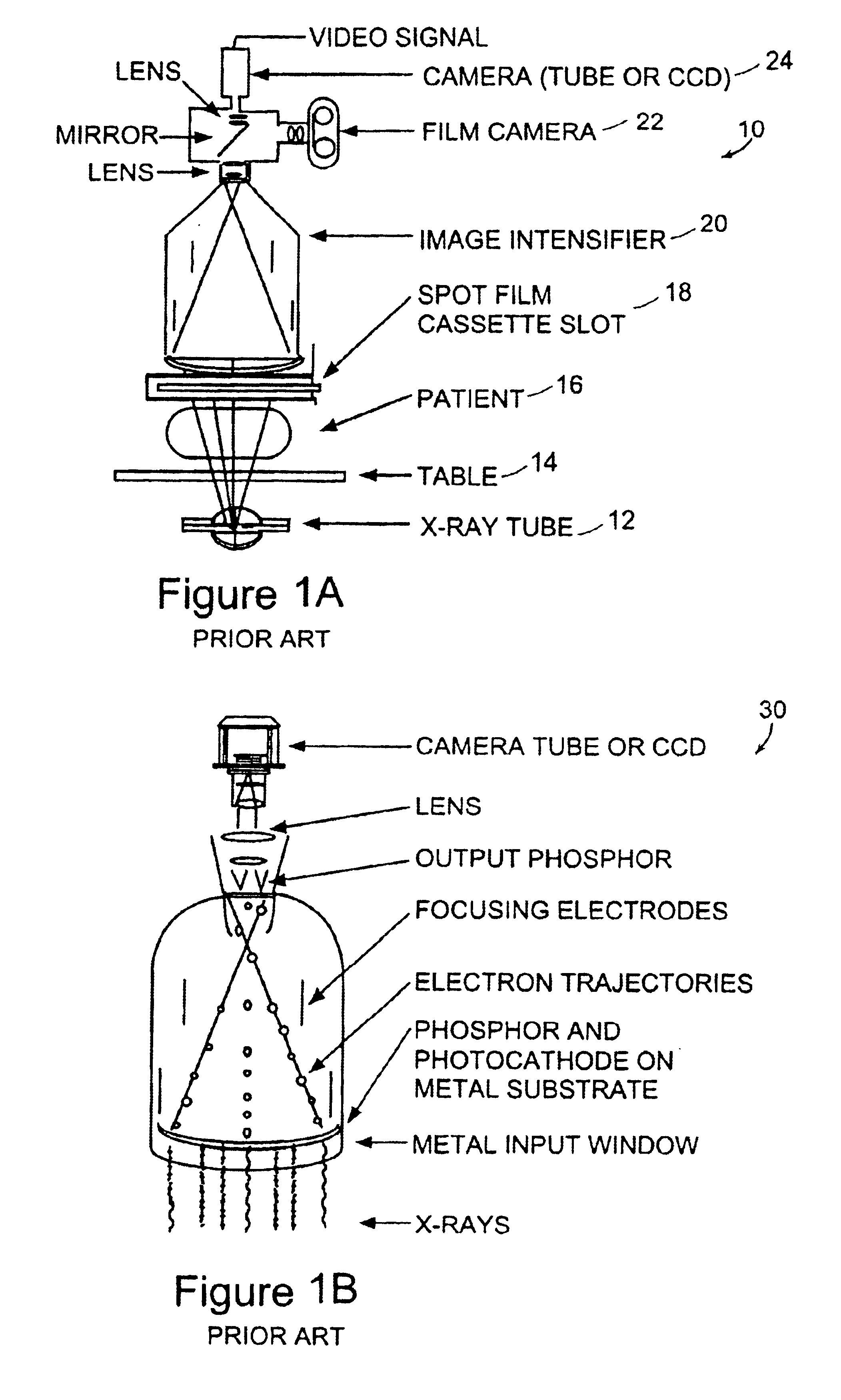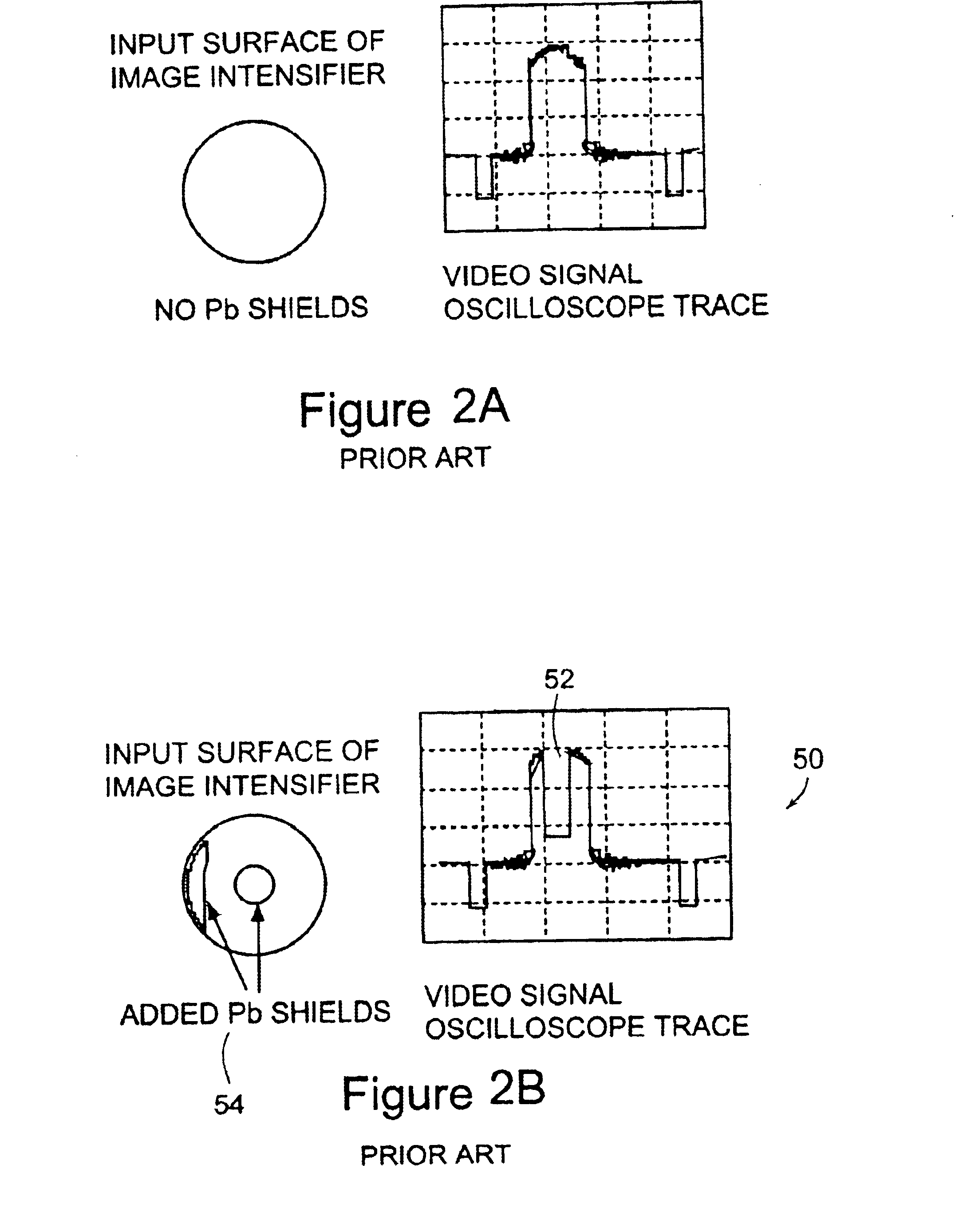System and method for x-ray fluoroscopic imaging
a fluoroscopic imaging and fluorescence technology, applied in the field of fluoroscopy, can solve the problems of obscuring glare and contrast loss, limited use of fluoroscopy at 30 video frames/second alone, and the inability to switch to a high detail mode, etc., to achieve accurate image, reduce or eliminate scattered radiation
- Summary
- Abstract
- Description
- Claims
- Application Information
AI Technical Summary
Benefits of technology
Problems solved by technology
Method used
Image
Examples
Embodiment Construction
[0098]Systems for quantitative radiographic imaging are described in U.S. Pat. No. 5,864,146 issued on Jan. 26, 1999 to Karellas and in WO 97 / 42877 published on Nov. 20, 1997 also by Karellas, both of which being incorporated herein by reference in their entirety.
[0099]FIGS. 1A and 1B illustrate prior art fluoroscopic imaging devices for interventional radiology and cardiovascular applications which have traditionally used image intensifiers 20 coupled to either charge-coupled devices (CCDs) 24 or pick-up tubes. Conventionally, x-ray image intensifiers are used in conjunction with television cameras 24 for fluoroscopy. The x-ray image intensifier 20 detects the x-ray image and converts it to a small, bright image of visible light. Tropically, this visible image is then transferred by lenses to a television camera for final display on a monitor. FIG. 1B illustrates the details of the detection and amplification process.
[0100]While such devices provide image quality sufficient for mos...
PUM
 Login to View More
Login to View More Abstract
Description
Claims
Application Information
 Login to View More
Login to View More - R&D
- Intellectual Property
- Life Sciences
- Materials
- Tech Scout
- Unparalleled Data Quality
- Higher Quality Content
- 60% Fewer Hallucinations
Browse by: Latest US Patents, China's latest patents, Technical Efficacy Thesaurus, Application Domain, Technology Topic, Popular Technical Reports.
© 2025 PatSnap. All rights reserved.Legal|Privacy policy|Modern Slavery Act Transparency Statement|Sitemap|About US| Contact US: help@patsnap.com



